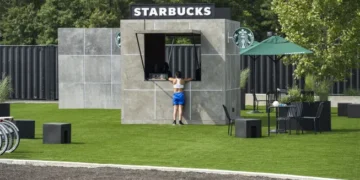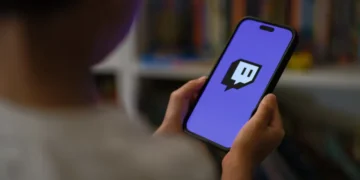Opinions expressed by Entrepreneur contributors are their own.
PowerPoint and other presentation tools are great tools when used well. It can be a challenging experience for the audience when they aren’t done well. Hopefully, you’ve had the experience of watching a really good one. If you’re lucky, you’ve been the one presenting it. Why aren’t more of them better? In general, they don’t have a great reputation, which means we have a great opportunity.
We’ve all watched great TV, read a gripping novel and enjoyed a riveting film. Why should slide presentations have to be different? The key to an impactful slide deck to drive a great presentation comes from the basics of storytelling.
Whether you’re selling a product, educating a customer or motivating employees, your presentation will go from standard to riveting if you focus on telling a story — and it’s not that different from great cooking.
Related: 6 Simple Ways to Wow With Your Next Virtual Presentation
Reading the recipe: Storytelling defined
The classic storytelling line chart might not be familiar if you’ve never taken a writing class. Still, it’s pretty simple: a horizontal line represents the introduction, inclining sharply with the rising action, comes to a peak at the climax, heads back down with the falling action and then levels off to horizontal again with the resolution. This is a common format.
Having a defined beginning, middle and end can be helpful. The beginning is your agenda. Why are we here? What is the problem? Sometimes, we even give the punchline away at the beginning to ensure we have the audience’s attention. Your middle should address pain points or explore solutions. It’s also a place you can introduce differentiators. An effective ending should show a resolution of the problem, introduce next steps, or present a call to action. The ending should leave your audience fulfilled.
Gathering the ingredients: persuasive storytelling
A persuasive storytelling style aims to convince the audience to agree with the narrator’s objective or point of view — i.e. gain buy-in — by inviting them into an experience. This experience may create empathy, draw real-world connections and increase retention by tapping into emotions or imagination. Your aim could be to bridge the gap between what is and what could be.
Related: The Best Way to Respond to Questions After a Presentation or Meeting
Preparing your garnishes: visual storytelling
A visual is only as good as the job it’s doing. For an internal, decision-driven presentation, sometimes simpler is better — avoid confusion and focus on the task. Sometimes, a visually bland slide deck cannot produce the same impact even with the most compelling copy. If you’re uncomfortable writing, you can still tell a story primarily with visuals. If you’re going to lean more heavily on your visuals, you should understand what your visual storytelling needs to accomplish. It should engage visual cognition; this is particularly effective if you’re presenting to visual learners.
Visuals can be more interpretive and make it easier to impart messages subliminally. Be careful, though; poorly done images can leave your audience confused. Lastly, visual storytelling enlists emotions, which is crucial for reaching the objective of your presentation.
Mixing it all together: the presentation process
As you’re preparing your storytelling presentation, you’ll find it easier if you follow a process. First, grasp the vision, challenges, goals, and objectives you’ll outline in your presentation. If you don’t know the story, it’s hard to tell it to someone else. Next, identify your audience. Who are they, what do they care about, and how can you achieve your objective with this particular group of people? Before creating your presentation, make sure you know the practical constraints. When and where is the presentation? How many people will be there? Do you need to allow time for Q&A, etc.? Knowing the answers to these questions will give you a firm structure to build on.
Now it’s time to brainstorm. Think broadly and let yourself consider anything; you can delete it later. Pull your thoughts into an organized structure and consider the theme as you do so. Balance your content, so you’re not too focused on one area of the story, and make sure to connect the dots between problems and solutions/goals. Build the bones first, following the story structure line from the beginning. Make a strong frame, and then fill in the text and messaging.
Related: Harness the Power of Storytelling to Transform Your Business for the Better
Plating your meal
Now it’s time to design individual slides that fit your theme, audience and outline. Just as your whole presentation should be a story, each slide should also have storytelling elements. As you design, ask yourself, what is the best layout, color and function to convey your message?
Each slide should display concise content that summarizes your key points. You shouldn’t just be reading a block of text–though, sometimes, that might be the right format for the job. The visuals should match and enhance the copy, helping to clarify the order and showcasing core concepts. Carefully curate your layout, so it’s clean and logical. The layout is your tool to help your audience process the content. Carefully consider horizontal vs. vertical elements and your use of color, and be careful not to get too excited and make it overly busy.
Bon appétit
In my experience, employees and clients want to be energized by presentations and clear in their interpretation of the content. They want to feel like they’ve gained knowledge, motivation or appreciation.
If you’re in leadership, you want your presentations to be effective. No one wants to waste time reviewing a slide deck that isn’t worth their attention. To wrap up my cooking metaphor, if you serve your audience something carefully thought out and expertly presented, they’ll be satisfied when they walk away from your table — or conference room.
Read the full article here














